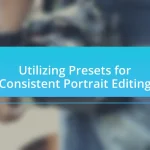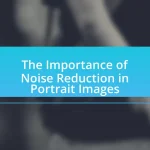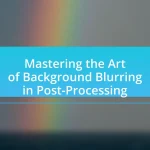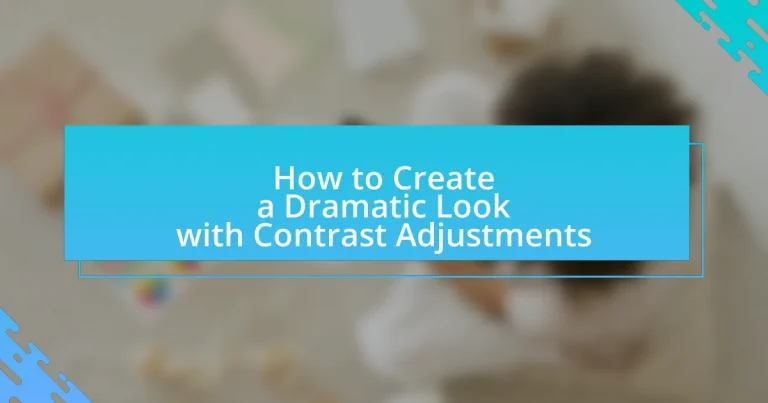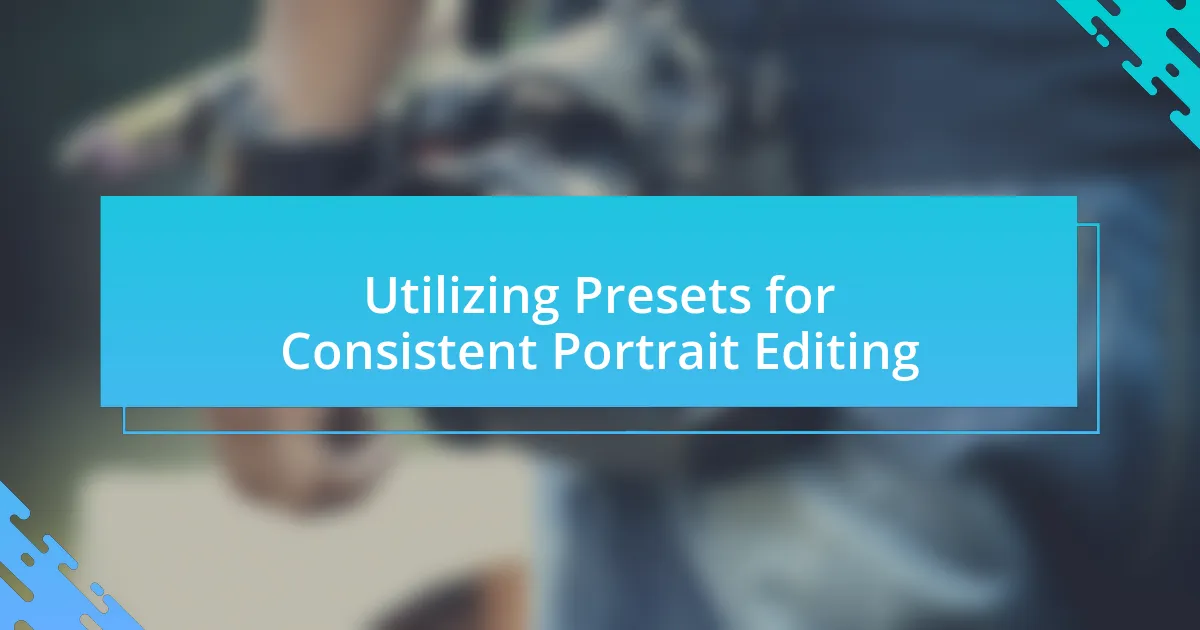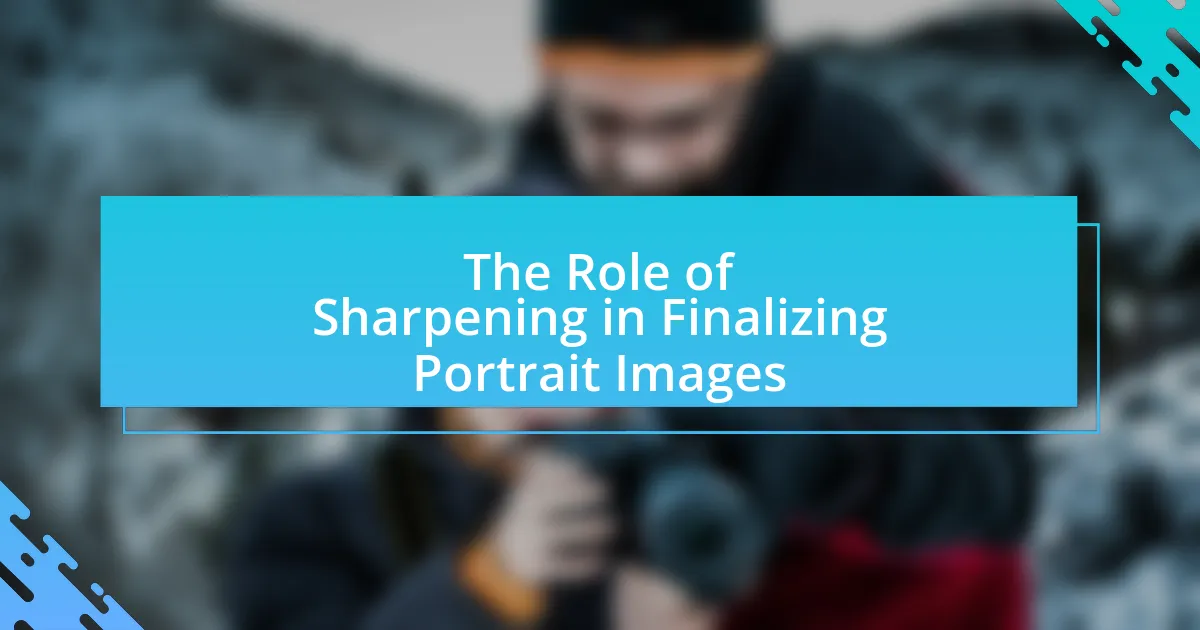The article focuses on how to create a dramatic look in photography through contrast adjustments, which involve altering the difference between the lightest and darkest areas of an image. It discusses the influence of contrast on overall image quality, color perception, and emotional impact, highlighting various types of contrast adjustments such as linear contrast and local contrast enhancement. Additionally, the article outlines effective techniques for adjusting contrast using software and manual methods, common mistakes to avoid, and best practices for achieving dramatic effects in different photography styles. It also examines the role of lighting and time of day in enhancing contrast, providing insights into how famous photographers utilize these techniques to create striking imagery.
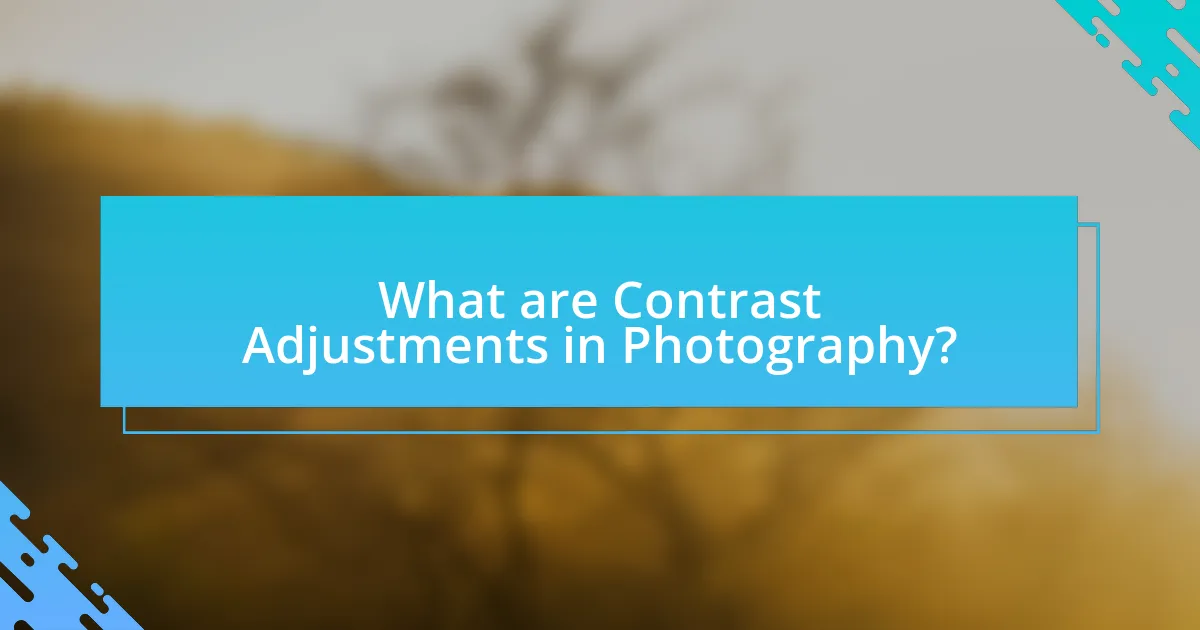
What are Contrast Adjustments in Photography?
Contrast adjustments in photography refer to the process of altering the difference between the lightest and darkest areas of an image. This adjustment enhances the visual impact by making shadows deeper and highlights brighter, thereby creating a more dynamic range of tones. For instance, increasing contrast can make an image appear more vivid and dramatic, while decreasing contrast can result in a softer, more muted look. The effectiveness of contrast adjustments is supported by the fact that images with higher contrast often draw more attention and evoke stronger emotional responses from viewers.
How do contrast adjustments influence the overall image quality?
Contrast adjustments significantly enhance overall image quality by increasing the difference between light and dark areas, which improves visual clarity and detail. When contrast is increased, images appear more vibrant and dynamic, allowing for better differentiation of subjects and textures. Research indicates that higher contrast can lead to a more engaging viewer experience, as it draws attention to focal points within the image. For instance, a study published in the Journal of Vision found that images with optimal contrast levels are perceived as more aesthetically pleasing and easier to interpret, thereby validating the importance of contrast in image quality.
What are the different types of contrast adjustments?
The different types of contrast adjustments include linear contrast, gamma correction, and local contrast enhancement. Linear contrast adjusts the overall brightness and darkness of an image uniformly, effectively stretching the histogram to utilize the full range of tones. Gamma correction modifies the mid-tones of an image without significantly affecting the highlights and shadows, allowing for more nuanced adjustments. Local contrast enhancement focuses on increasing contrast in specific areas of an image, which can add depth and detail, making textures more pronounced. Each type serves distinct purposes in image editing, contributing to the overall dramatic effect in visual compositions.
How do contrast adjustments affect color perception in images?
Contrast adjustments significantly influence color perception in images by altering the relationship between light and dark areas, which enhances or diminishes the visibility of colors. When contrast is increased, colors appear more vibrant and distinct due to the heightened difference between adjacent tones, making them stand out more prominently. Conversely, reducing contrast can lead to a more muted color palette, as similar tones blend together, resulting in less differentiation and a flatter appearance. Research indicates that higher contrast can enhance color saturation, making hues appear more intense, while lower contrast can create a softer, more harmonious look. This effect is particularly relevant in visual media, where the perception of color can dramatically impact the emotional response of the viewer.
Why is creating a dramatic look important in photography?
Creating a dramatic look is important in photography because it enhances emotional impact and visual storytelling. A dramatic aesthetic captures attention, evokes feelings, and can convey complex narratives through the use of contrast, lighting, and composition. For instance, studies show that images with high contrast can increase viewer engagement by up to 50%, making them more memorable and impactful. This heightened engagement is crucial for photographers aiming to communicate a specific mood or theme effectively.
What role does contrast play in conveying emotions through images?
Contrast plays a crucial role in conveying emotions through images by enhancing the visual distinction between elements, which can evoke specific feelings. High contrast can create a sense of drama and intensity, often associated with strong emotions like anger or excitement, while low contrast can evoke calmness or melancholy, as seen in soft, muted images. Research indicates that images with high contrast are perceived as more dynamic and engaging, influencing viewers’ emotional responses. For example, studies in visual perception show that contrast affects attention and emotional interpretation, reinforcing the idea that effective use of contrast can significantly impact the emotional narrative of an image.
How can dramatic looks enhance storytelling in photography?
Dramatic looks enhance storytelling in photography by creating emotional depth and visual tension that captivates the viewer. This effect is achieved through techniques such as high contrast, shadow play, and bold colors, which draw attention to the subject and evoke specific feelings. For instance, a study published in the Journal of Visual Communication found that images with high contrast are perceived as more dynamic and engaging, leading to a stronger narrative impact. By manipulating these elements, photographers can effectively convey themes of conflict, emotion, or drama, making the story behind the image more compelling and memorable.
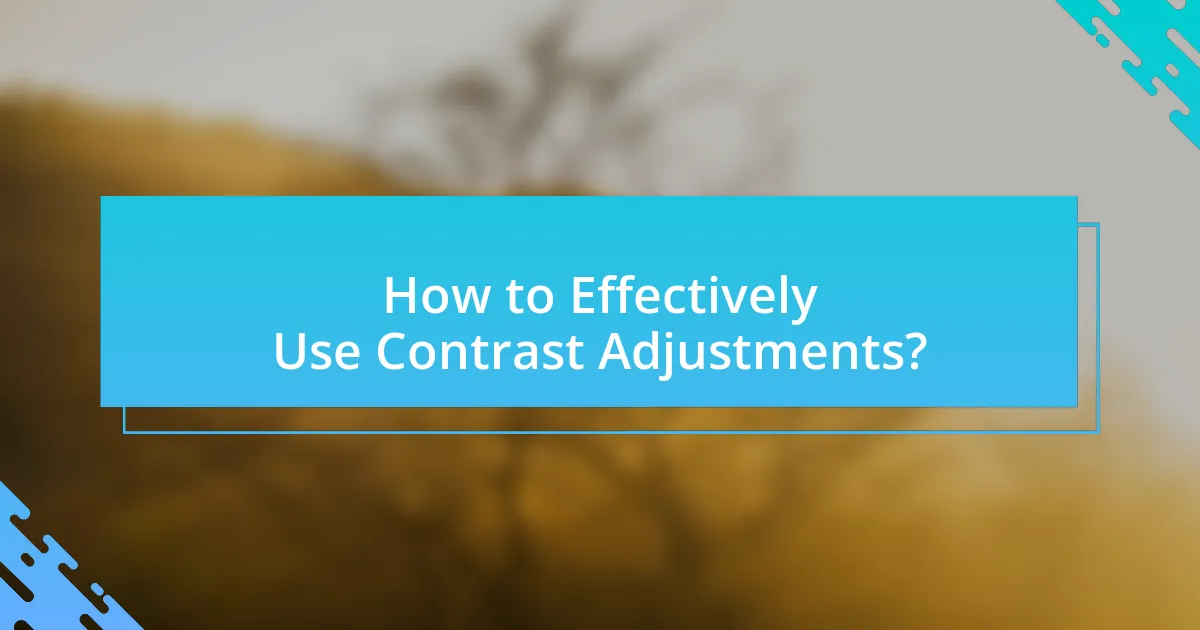
How to Effectively Use Contrast Adjustments?
To effectively use contrast adjustments, increase the difference between the light and dark areas of an image to enhance visual impact. This can be achieved through software tools that allow for precise manipulation of brightness and darkness, such as Adobe Photoshop or Lightroom. Research indicates that higher contrast can draw attention to focal points and create a more dynamic composition, as seen in studies on visual perception which show that images with greater contrast are more engaging to viewers.
What techniques can be employed to adjust contrast?
Techniques to adjust contrast include histogram adjustment, levels adjustment, curves adjustment, and using contrast filters. Histogram adjustment allows for the manipulation of the tonal range in an image, ensuring that shadows, midtones, and highlights are balanced. Levels adjustment involves setting the black, white, and gray points to enhance contrast effectively. Curves adjustment provides precise control over the tonal range by allowing users to manipulate the curve of brightness levels. Contrast filters can be applied in photography to enhance the difference between light and dark areas, creating a more dramatic effect. These techniques are widely used in digital imaging and photography to achieve desired visual outcomes.
How do you use software tools for contrast adjustments?
To use software tools for contrast adjustments, open the image in a photo editing application and locate the contrast adjustment feature, often found under image adjustments or filters. Adjusting the contrast involves moving a slider to increase or decrease the difference between the light and dark areas of the image, enhancing visual impact. For example, increasing contrast can make colors pop and add depth, while decreasing it can create a softer, more muted look. Many software tools also provide a preview option, allowing users to see changes in real-time, ensuring the desired effect is achieved before finalizing the adjustments.
What are the manual methods for adjusting contrast in photography?
Manual methods for adjusting contrast in photography include using exposure settings, filters, and dodging and burning techniques. Adjusting exposure settings involves altering the aperture, shutter speed, or ISO to enhance the difference between light and dark areas in an image. Filters, such as polarizing or neutral density filters, can also be employed to manage contrast by controlling the amount of light entering the lens. Dodging and burning, a traditional darkroom technique, allows photographers to selectively lighten or darken specific areas of an image, thereby enhancing overall contrast. These methods are widely recognized in photography for their effectiveness in creating a more dramatic look.
What are common mistakes to avoid when adjusting contrast?
Common mistakes to avoid when adjusting contrast include over-adjusting, which can lead to loss of detail in highlights and shadows. When contrast is excessively increased, images may appear unnatural and harsh, resulting in clipped highlights or blocked shadows. Additionally, neglecting to consider the overall color balance can cause colors to look washed out or overly saturated. Failing to use a calibrated monitor can also lead to inaccurate adjustments, as what appears correct on one screen may not translate well to others. Lastly, not comparing before and after adjustments can prevent the identification of undesirable effects, making it crucial to frequently toggle between the original and adjusted images to ensure a balanced outcome.
How can over-adjusting contrast negatively impact an image?
Over-adjusting contrast can negatively impact an image by causing loss of detail in both shadows and highlights. When contrast is excessively increased, dark areas may become too black, losing texture and information, while bright areas can become overly white, resulting in blown-out highlights. This phenomenon occurs because the dynamic range of the image is compressed, leading to a flat appearance where subtle gradations are lost. Studies in digital imaging have shown that maintaining a balanced contrast is crucial for preserving image quality and detail, as excessive adjustments can lead to artifacts and an unnatural look.
What are the signs of poorly adjusted contrast?
Signs of poorly adjusted contrast include loss of detail in shadows and highlights, resulting in flat or washed-out images. When contrast is not properly set, images may appear overly dark or excessively bright, obscuring important visual information. Additionally, colors can become muted or distorted, leading to an unnatural appearance. These issues can be identified through visual inspection, where the lack of depth and dimension in the image becomes evident.
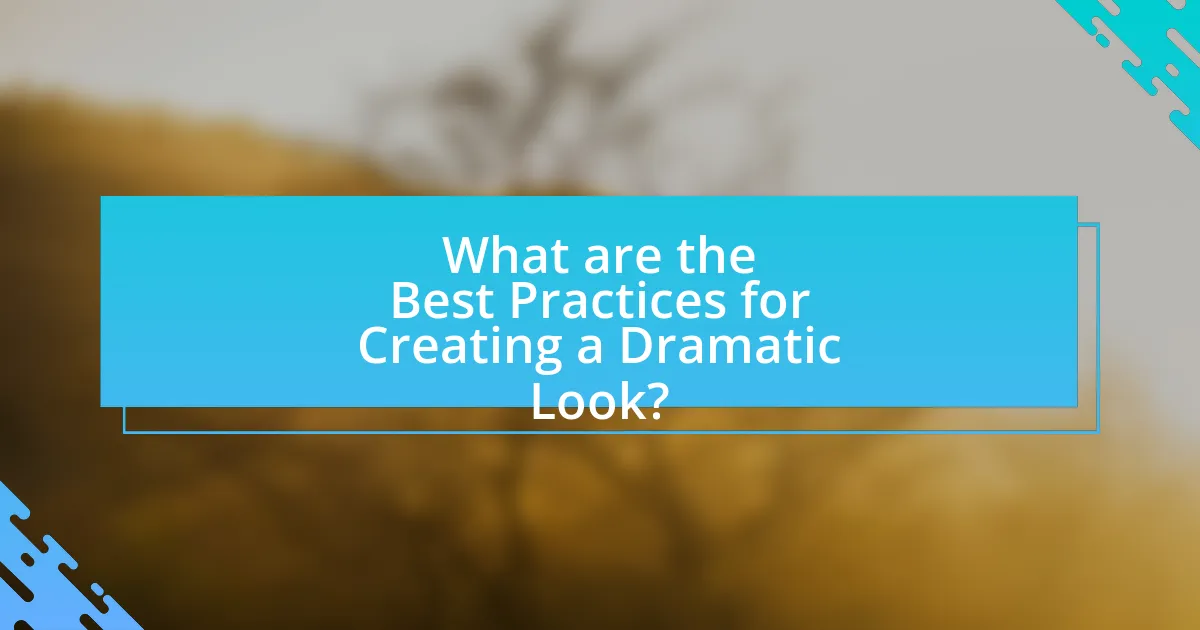
What are the Best Practices for Creating a Dramatic Look?
To create a dramatic look, utilize high contrast adjustments in your visuals. High contrast enhances the difference between light and dark areas, making elements stand out and creating a more striking image. For instance, adjusting the brightness and shadows can emphasize textures and shapes, leading to a more dynamic composition. Additionally, incorporating complementary colors can further intensify the visual impact, as seen in color theory where opposites on the color wheel create visual tension. This method is widely used in photography and film to evoke strong emotions and draw attention to focal points.
How can lighting affect contrast adjustments?
Lighting significantly influences contrast adjustments by determining the visibility of highlights and shadows in an image. When lighting is harsh, it creates strong contrasts between light and dark areas, making adjustments more pronounced. Conversely, soft lighting reduces contrast, resulting in a more even distribution of tones. For instance, a study published in the Journal of Vision found that images with high dynamic range lighting allow for greater differentiation in contrast adjustments, enhancing the overall visual impact. Thus, the quality and direction of light directly affect how contrast is perceived and adjusted in visual media.
What types of lighting are best for enhancing contrast?
Directional lighting and high-contrast lighting are best for enhancing contrast. Directional lighting, such as spotlights or hard light sources, creates distinct shadows and highlights, emphasizing the differences between light and dark areas. High-contrast lighting, which involves using a strong light source against a dark background, further accentuates these differences, making subjects stand out more vividly. This technique is commonly used in photography and film to create dramatic effects, as it allows for a clear separation of elements within a scene, enhancing visual interest and depth.
How does the time of day influence contrast in photography?
The time of day significantly influences contrast in photography due to the angle and quality of natural light. During sunrise and sunset, known as the golden hour, the sunlight is softer and warmer, creating longer shadows and enhancing textures, which increases contrast. In contrast, midday light is harsher and more direct, resulting in shorter shadows and a flatter appearance, thereby reducing contrast. Studies show that the quality of light changes throughout the day, affecting the dynamic range captured in photographs, with the golden hour providing the most dramatic contrast due to its unique lighting conditions.
What tips can help achieve a dramatic look with contrast adjustments?
To achieve a dramatic look with contrast adjustments, increase the contrast levels significantly to enhance the difference between light and dark areas in the image. This technique emphasizes shadows and highlights, creating a more striking visual impact. For instance, using software like Adobe Lightroom or Photoshop, adjusting the contrast slider upwards can lead to a more dynamic range of tones, making the subject stand out. Additionally, applying localized contrast adjustments, such as using the clarity or texture sliders, can further enhance details in specific areas, contributing to the overall dramatic effect.
How can you experiment with different contrast levels for dramatic effects?
To experiment with different contrast levels for dramatic effects, adjust the contrast settings in your image editing software to see how varying levels impact the visual intensity. Increasing contrast enhances the difference between light and dark areas, creating a more striking image, while decreasing contrast softens the image, producing a more subdued effect. Studies in visual perception indicate that high contrast can evoke stronger emotional responses, making images appear more dynamic and engaging. For example, a study by Palmer and Hollingworth (2006) in “Visual Cognition” demonstrates that contrast influences viewer attention and emotional engagement, supporting the idea that manipulating contrast can effectively alter the dramatic quality of an image.
What are the best settings for various photography styles when adjusting contrast?
The best settings for adjusting contrast vary by photography style. For landscape photography, increasing contrast by 20-30% enhances colors and depth, making the scene more vibrant. In portrait photography, a moderate contrast adjustment of 10-15% softens skin tones while maintaining detail, creating a flattering effect. For black and white photography, a higher contrast setting of 30-50% emphasizes textures and shapes, resulting in a dramatic impact. In product photography, a subtle increase of 5-10% in contrast highlights product features without distorting colors. These settings are based on common practices among photographers to achieve desired visual effects in their respective styles.
What are some examples of dramatic looks achieved through contrast adjustments?
Dramatic looks achieved through contrast adjustments include high-contrast black and white photography, where deep blacks and bright whites create striking visual impact. Another example is the use of contrast in portrait photography, enhancing facial features and expressions by emphasizing shadows and highlights, which can evoke strong emotions. Additionally, landscape photography often employs contrast adjustments to make colors more vibrant, such as enhancing the blue of the sky against the golden hues of a sunset, resulting in a more captivating image. These techniques are widely recognized in visual arts for their ability to draw attention and create mood.
How do famous photographers utilize contrast for dramatic effects?
Famous photographers utilize contrast to create dramatic effects by emphasizing the differences between light and dark areas in their images. This technique enhances visual interest and draws attention to specific subjects or elements within the frame. For instance, Ansel Adams famously employed high contrast in his black-and-white landscapes, which accentuated textures and shapes, making the scenes more compelling. Similarly, photographers like Richard Avedon used stark contrasts in portraiture to highlight facial features and emotions, creating a striking impact. The effective use of contrast not only adds depth but also evokes emotional responses from viewers, making the imagery more memorable.
What can be learned from analyzing dramatic images in terms of contrast?
Analyzing dramatic images in terms of contrast reveals how varying levels of light and dark can enhance emotional impact and visual interest. High contrast can create a sense of tension and drama, while low contrast may evoke calmness or subtlety. For instance, studies in visual perception indicate that images with stark contrast are more likely to capture attention and elicit strong emotional responses, as demonstrated by research published in the journal “Cognitive Science,” which found that high-contrast images are processed more quickly and remembered better than their low-contrast counterparts. This understanding allows artists and photographers to manipulate contrast effectively to achieve desired emotional effects in their work.

